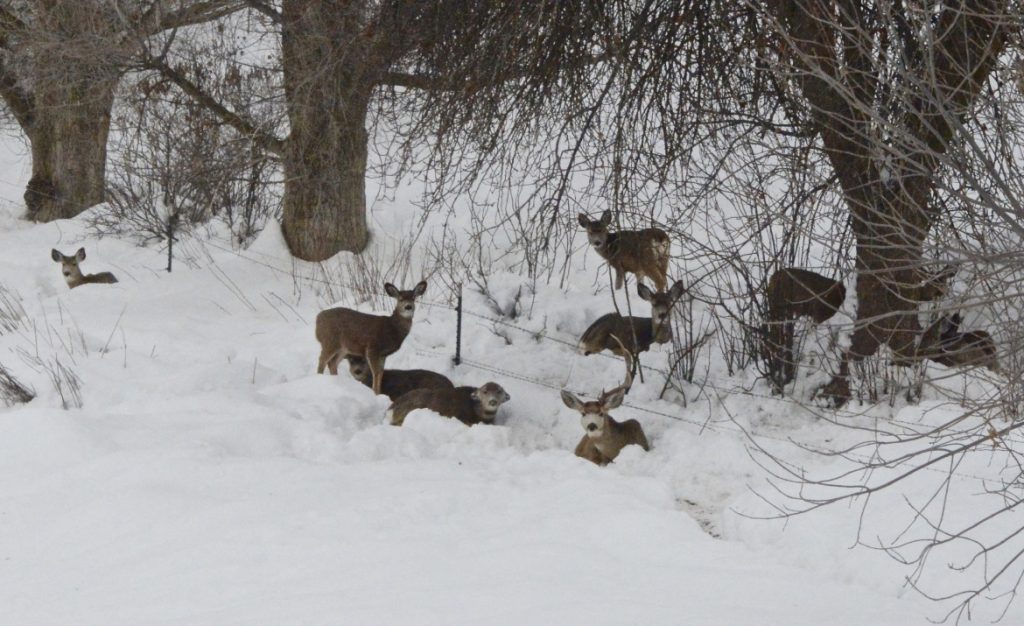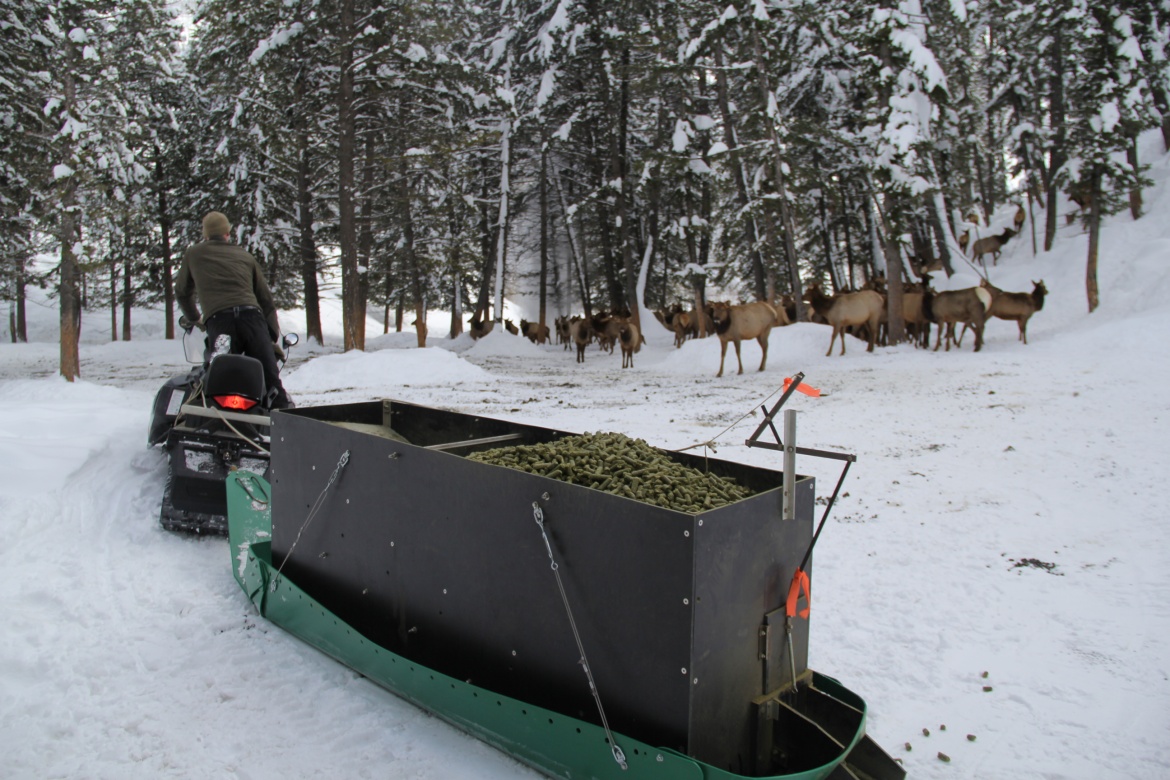Cold temperatures paired with heavy snowfall has plagued animals in the western United States this winter, causing state wildlife agencies and conservation groups to take matters into their own hands to ensure the survival of our treasured wildlife.
Officials in Colorado have been baiting deer and elk at strategic locations to keep animals away from the dangers of busy roadways while volunteers from the Rocky Mountain Elk Foundation and other conservation groups have joined forces with Utah’s Division of Wildlife Resources to feed hungry animals in the Bear Lake area specialized pellets.
Nearby Idaho is no exception. After experiencing winter conditions unprecedented in the last 20 years, officials at Idaho Fish and Game are putting together a massive emergency big game feeding program in an attempt to curb the potential negative effects on deer, elk, and pronghorn.
The Department is slated to spend $650,000 feeding big game this winter, a 68 percent increase in spending compared to the $387,000 spent in 2008, the last big year for big game feeding.
“Winter feeding is a big deal for us right now,” said Fish and Game Deputy Director Ed Schriever. “This is a winter like we haven’t experienced in about 20 years in southern Idaho.”
The multi-pronged feeding program aims not only to help animals with sustenance through the winter months but also serves the purpose of keeping wildlife away from agricultural operations, busy highways and residential areas.

In addition to the feeding of an estimated 10,000 mule deer, 10,000 elk and 100 pronghorn antelope at various feeding stations, officials are also monitoring 1,700 elk and deer fitted with radio collars. This real-time data gives biologists and game managers critical information about the overall populations.
Despite their efforts, Fish and Game officials do unfortunately believe that winter mortality is inevitable. Mule deer specifically, are not as hardy as elk, and mule deer fawns experience difficulty surviving extreme winter conditions given their small size and minimal body fat.
“We are anticipating experiencing some winter mortality despite feeding,” State Game Manager Jon Rachael said. “We do not have a prediction at this stage how many deer we expect to lose this winter.”




